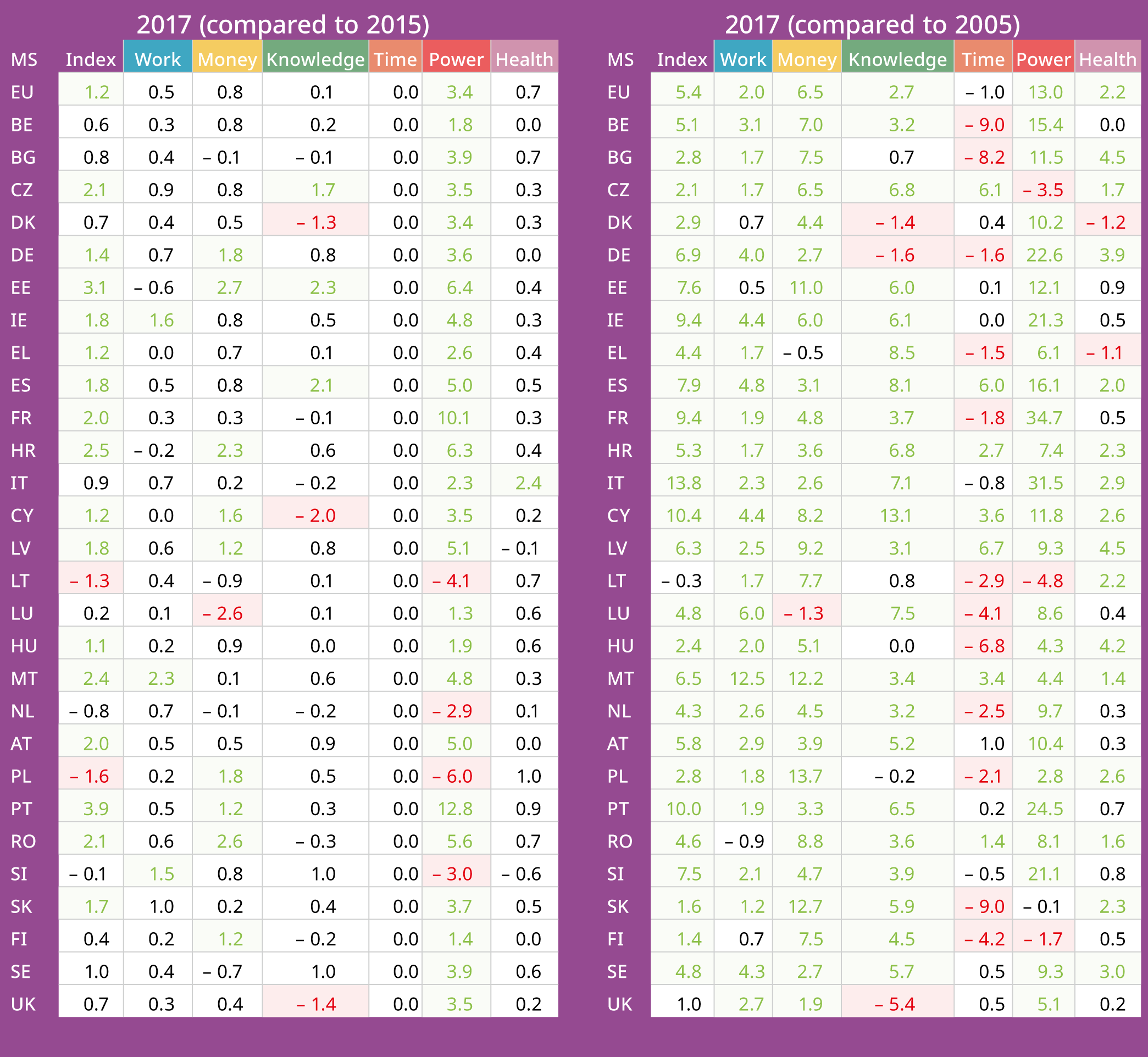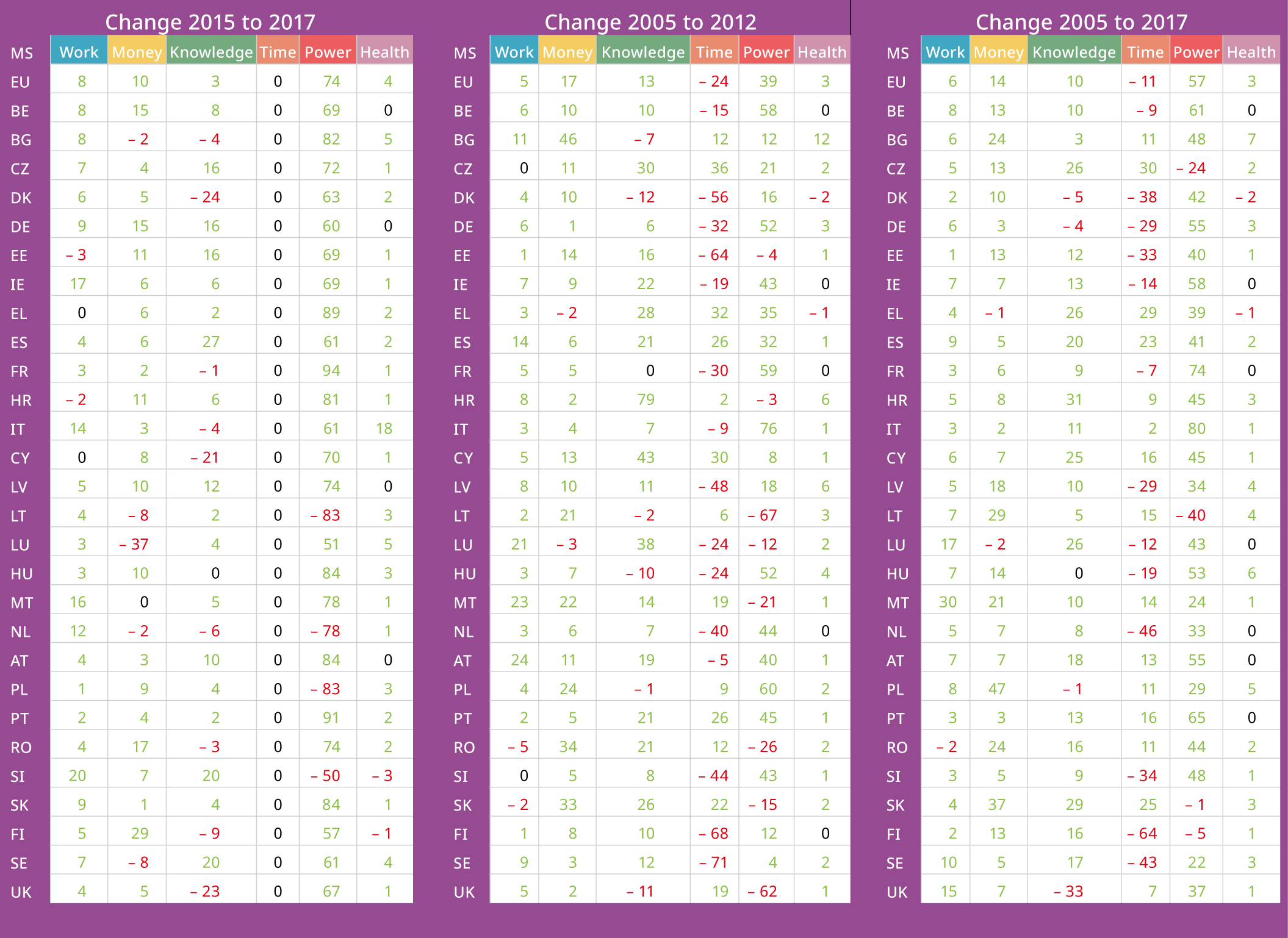More women in decision-making drives progress
The power domain has seen the biggest advances in gender equality but remains the most gender unequal in the Index. The EU score for this domain rose from 48.5 to 51.9 points between 2015 and 2017, an average increase of 1.7 points per year. In comparison, progress in other domains was less than 1 point over the same period (see Table 1).
Table 1: Changes in the Gender Equality Index and domain scores by Member State, 2005-2017 and 2015-2017 (points)
Improvements in the power domain contributed to nearly three quarters (74 %) of the progress in the Gender Equality Index between 2015 and 2017 (See Table 2). They were the key factor driving change in all Member States, explaining at least half of all Index score changes in each Member State, and in some (BG, EL, FR, HR, HU, AT, PT, SK) accounting for more than 80 % of progress. Overall, between 2005 and 2017, the power domain contributed 57 % of the advancement in the Gender Equality Index.
Table 2: Percentage contribution of different domains to Gender Equality Index progress scores (2015-2017, 2005-2012, 2005-2017)
The rise of women in decision-making became a key driver of gender equality in general in the aftermath of the economic crisis, explaining about two thirds of the progress in the EU Index score from 2012. In contrast, changes in the domain of power accounted only for 39 % of improvements in overall gender equality between 2005 and 2012 (see Table 2). Since 2015 the share of women in decision-making roles has increased in 24 Member States, with France (+ 10.1 points) and Portugal (+ 12.8 points) experiencing extraordinary rises. Four Member States (LT, NL, PL, SI), however, saw their share of women in decision-making fall in this period (see Table 1).

